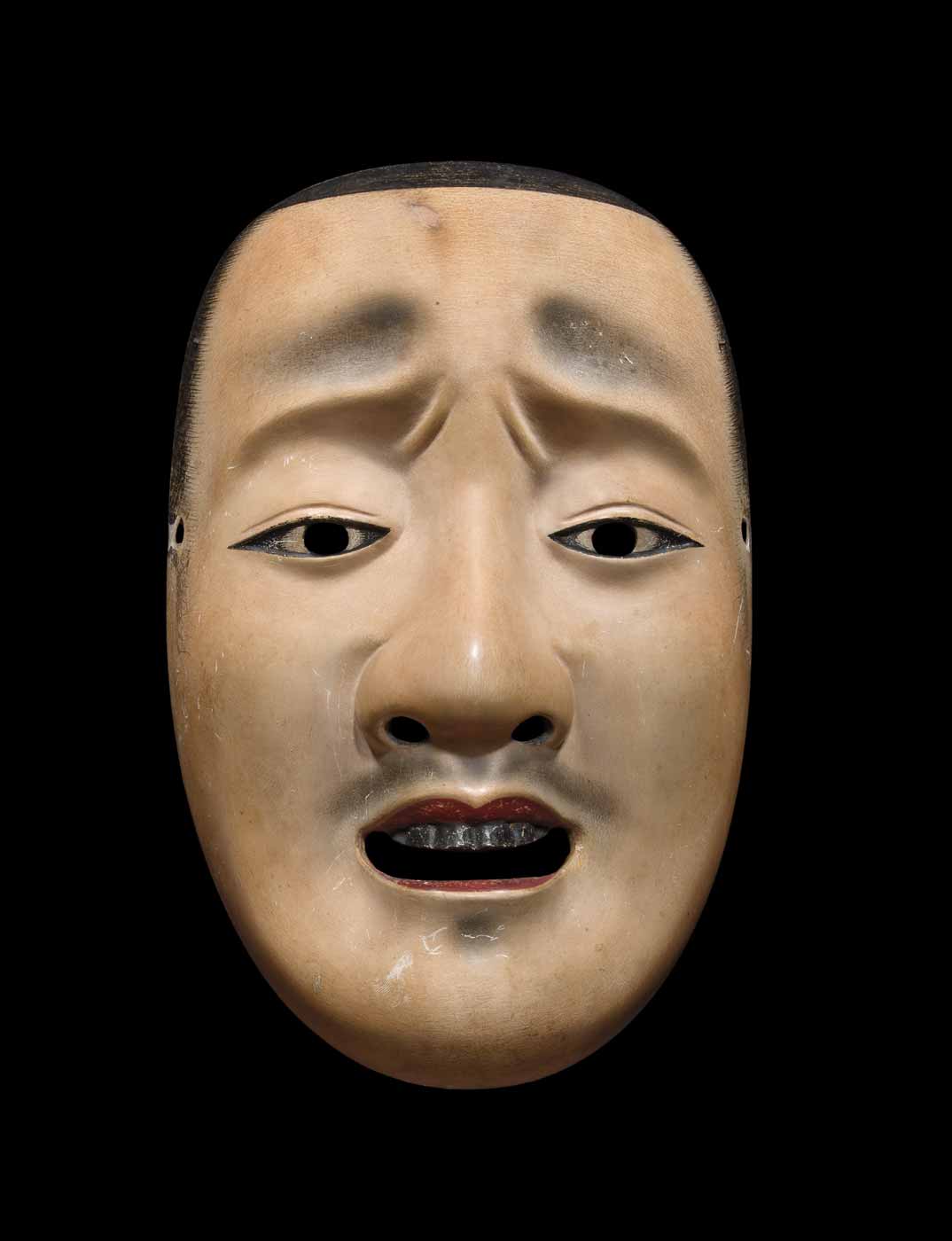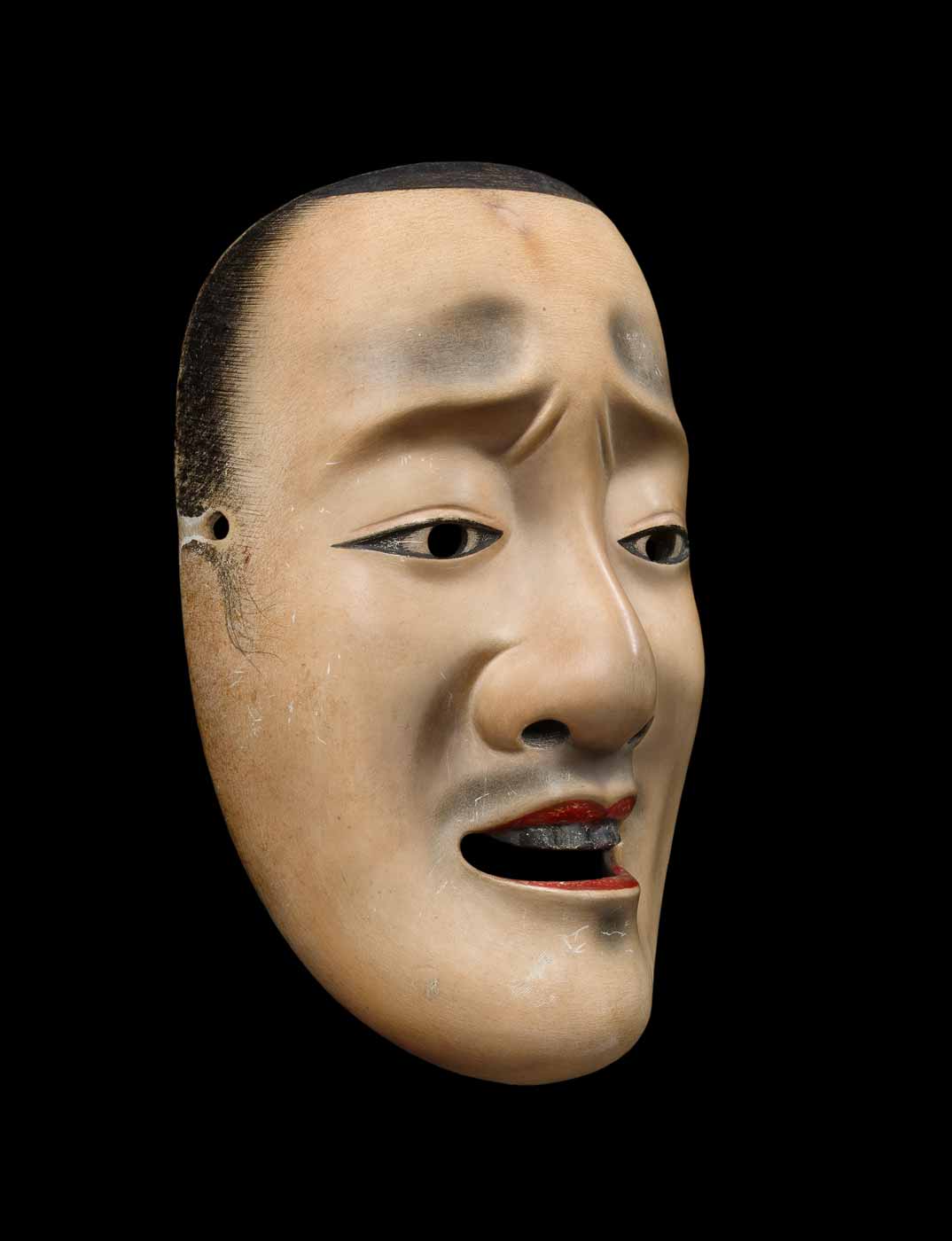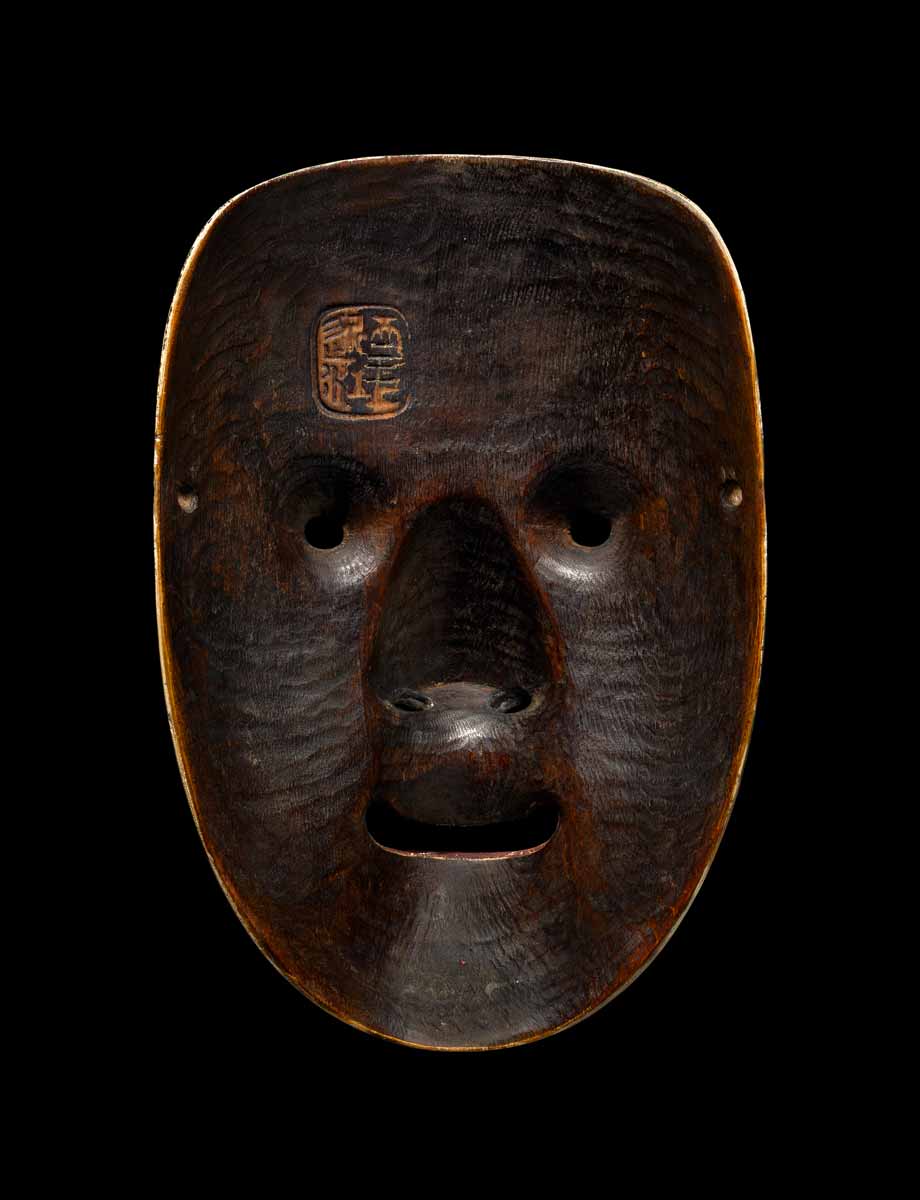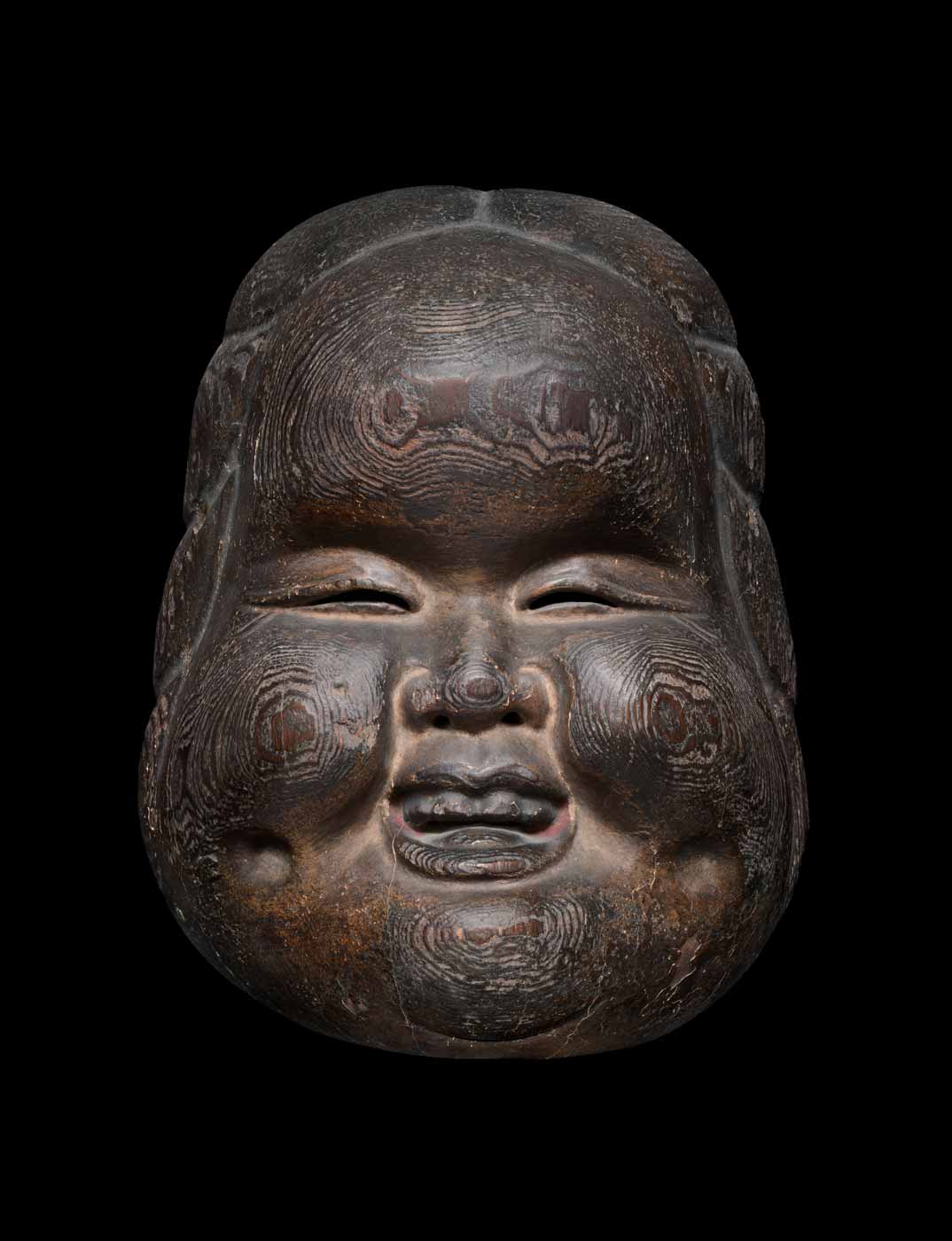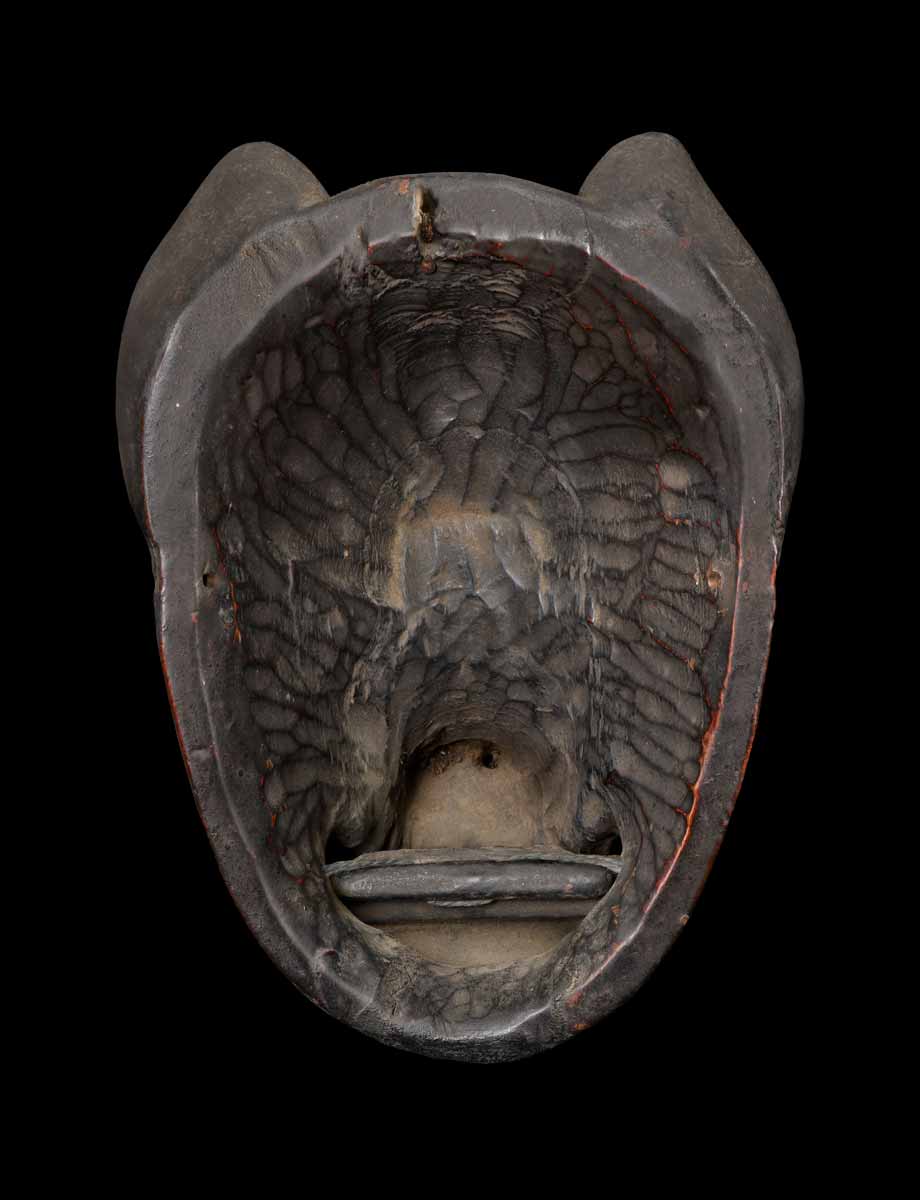Chūjō
Mask
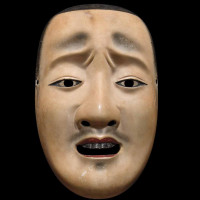
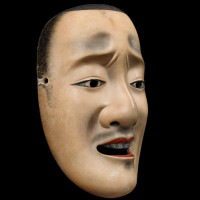
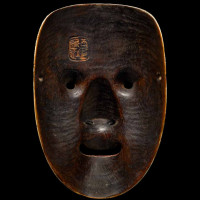
- Contact Us
-
Material
Japanese cypress (hinoki), pigments, and lacquer
-
Period
Edo period, 17th century
Description
NŌ MASK OF CHŪJŌ
Carver: Kodama Mitsumasa (Tenkaichi-Ōmi) (?-1704)
His branded seal “Tenkaichi-Ōmi” is engraved on the inner surface.
The Chūjō-type mask represents a young nobleman marked by sorrow. It is associated with the poet and aristocrat Ariwara no Narihira (825–880) of the Heian period, who attained the court rank of Chūjō (“Middle Captain”) at the age of 53. The high, delicately painted eyebrows conventionally denote high court status, while the two vertical lines between them convey profound melancholy.
This mask embodies the image of the refined aristocrat—elegant and graceful—yet burdened with inner suffering. It could be worn to portray a handsome young nobleman, or an aristocratic warrior of the Heike clan dying on the battlefield.
Worn by the principal actor (shite) in the second act of plays such as Urin’in (雲林院) and Michimori (通盛), the Chūjō mask expresses the tender and tragic side of the warrior class, emphasizing the contrast between aristocratic elegance and tragic destiny.
